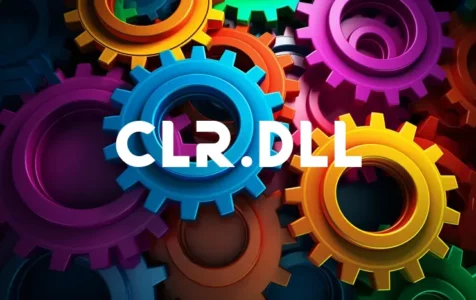Understanding clr.dll in the .NET Framework
The clr.dll is a fundamental component of the Microsoft .NET Framework, starting with version 4.0. This dynamic link library (DLL) file is essential for running applications developed with .NET. It has replaced the mscorwks.dll from earlier .NET versions and is commonly referred to as the Common Language Runtime (CLR). The CLR is essentially the engine that handles the execution of .NET programs, including tasks like memory management, garbage collection (an automatic process of freeing up memory by deleting objects that are no longer in use), thread management, and security.
Is clr.dll Safe and Could It Be Malicious?
As a legitimate and critical part of the .NET Framework, clr.dll is safe to run. It’s a core file from Microsoft and is used by many applications every day. However, like any file on your system, it could potentially be replaced or mimicked by a malicious file with the same name. To ensure safety, it’s always recommended to keep your system and security software up-to-date to protect against malware masquerading as legitimate system files.
Common clr.dll Issues
Despite its importance, clr.dll can sometimes cause issues. These are usually related to application crashes, where the error message might mention a clr.dll exception. Some common problems associated with clr.dll include:
– Crashes in a specific app or multiple apps
– Errors during program execution pointing to clr.dll
– Performance issues in .NET applications
Expert Tip: For smoother PC performance, consider using a PC optimization tool. It handles junk files, incorrect settings, and harmful apps. Make sure it's right for your system, and always check the EULA and Privacy Policy.
Special offer. About Outbyte, uninstall instructions, EULA, Privacy Policy.
These problems can have various causes, from corrupt .NET installations to conflicting software or even damaged hardware.
Fixing clr.dll Issues
When facing issues with clr.dll, there are several troubleshooting steps you can take:
1. Update Windows and .NET Framework to the latest version to ensure all patches and improvements are applied.
2. If an application crashes referencing clr.dll, use error logs and debug tools like WinDbg for a detailed examination of the problem. The stack trace may provide insights into what is causing the error.
3. Incorrectly configured .NET applications or corrupted files could lead to clr.dll throwing exceptions. You may need to look at the specific code that caused the failure and evaluate it for potential problems, such as stack overflows or incorrect use of file streams.
4. It may help to clear the Windows cache, including the pagefile, which sometimes resolves issues related to memory management.
5. If you suspect a hardware-related clr.dll issue, such as with RAM, running a hardware diagnostic or temporarily replacing hardware components can be revealing.
6. In some cases, third-party software conflicts (including anti-virus) may lead to clr.dll errors. Try disabling non-essential applications to see if the problem persists.
7. If none of the above solutions work, consider reinstalling the .NET Framework or repairing the existing installation.
For specific issues and personalized assistance, tapping into community resources can be invaluable. Many forums and discussion boards are filled with users who have faced similar problems and may offer a solution tuned to your situation. Visiting reliable technology support forums, such as Stack Overflow or the official Microsoft Developer Network (MSDN), can provide further insight and assistance.
Speaking of forums, community discussions regarding clr.dll issues are abundant. On software development forums, you will find threads discussing clr.dll in the context of debugging and error-handling. Case studies from other users can shed light on the range of problems linked to clr.dll and their fixes. You may find that developers and IT professionals often provide their troubleshooting steps that led to a resolution, which could guide you through fixing your own issues. It is a testament to the value of community expertise, especially when dealing with finicky system files.
Moreover, available resources for DLL file troubleshooting can sometimes include specific advice about clr.dll. Such as the Veeam community forums, where users discuss issues related to clr.dll causing crashes post-software updates, or even DLL-files.com, which serves as a repository for various DLL files and provides general troubleshooting assistance.
It can’t be overstated how crucial it is to source these DLLs or any associated fixes from reputable, official sources. DLL files from untrusted sources may carry security risks, including malware infections.
In conclusion, clr.dll is a vital part of the .NET framework’s functioning, enabling the execution and management of .NET applications. When encountering issues with clr.dll, a systematic approach to troubleshooting, spanning software updates, detailed error analysis, and possibly hardware checks, is the best way to resolve them. And when in doubt, reach out to the community or professional IT support for guidance.
